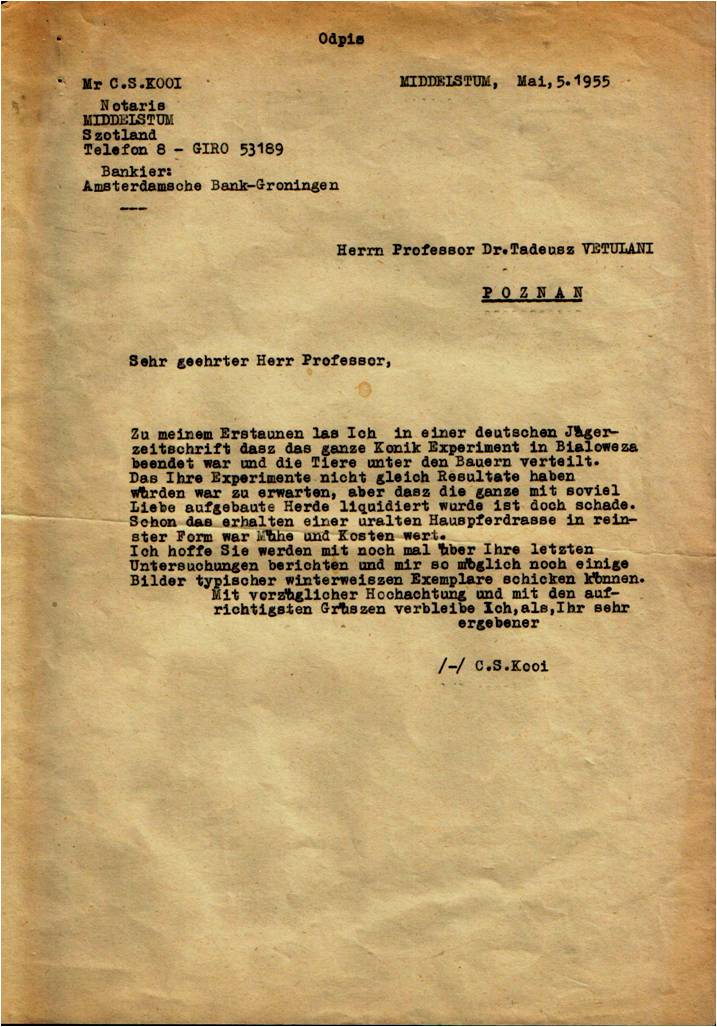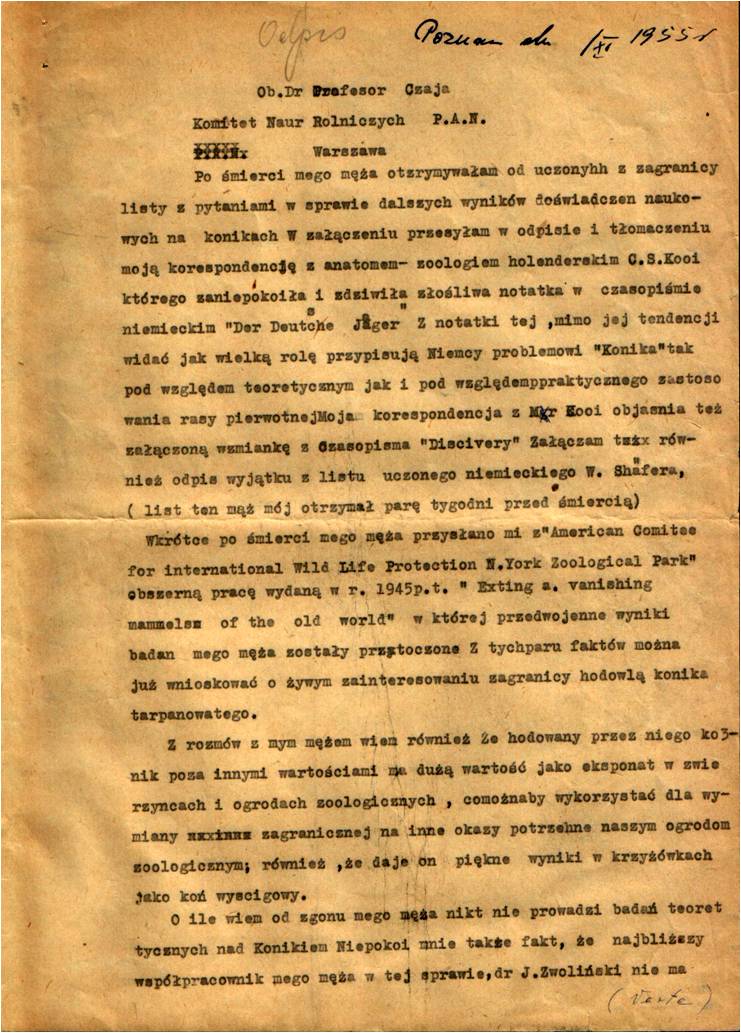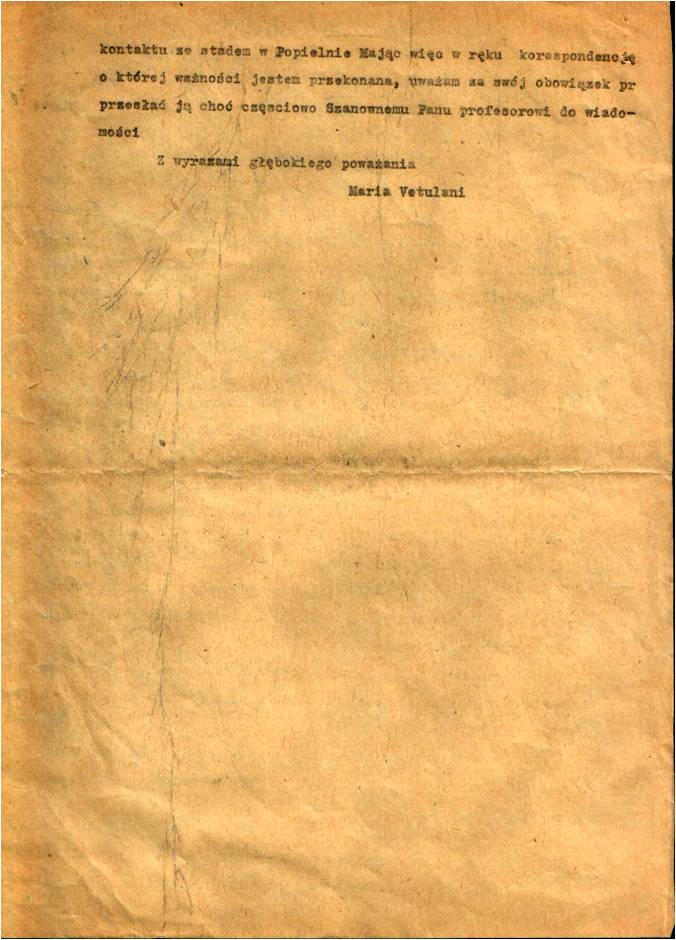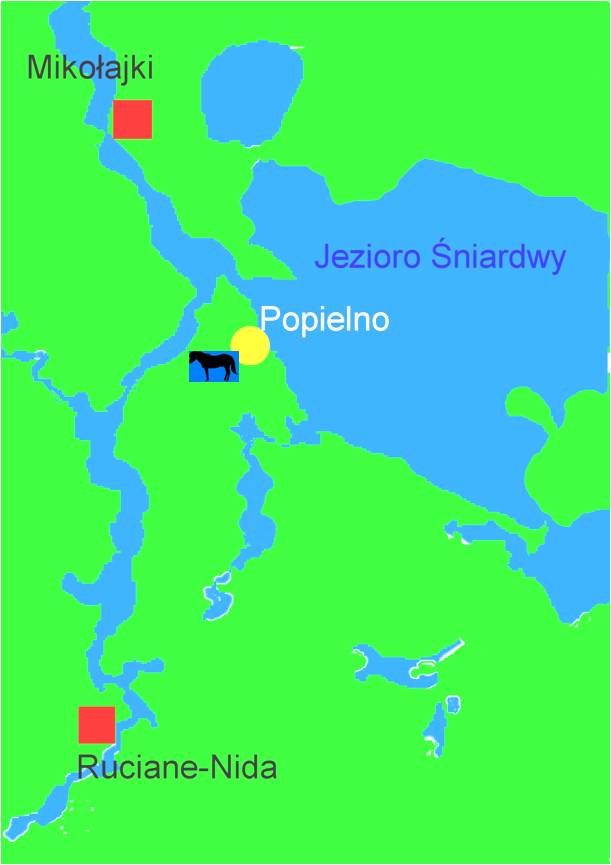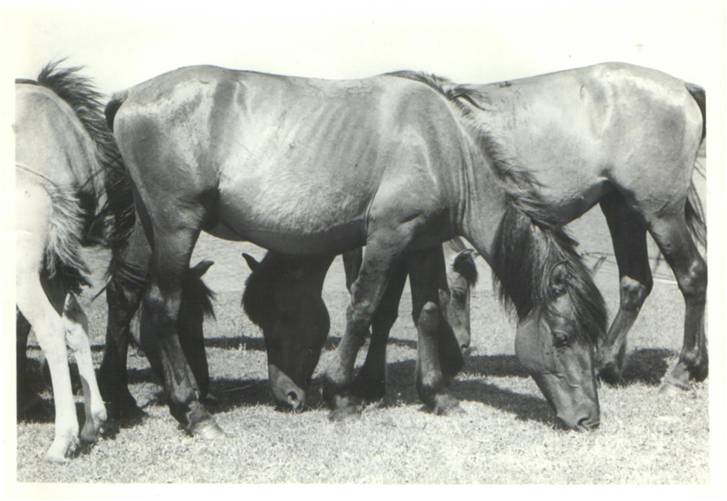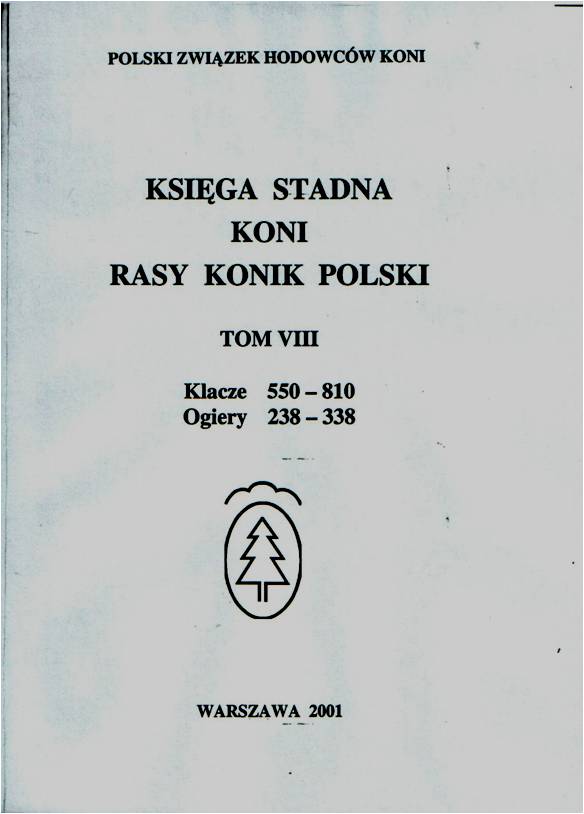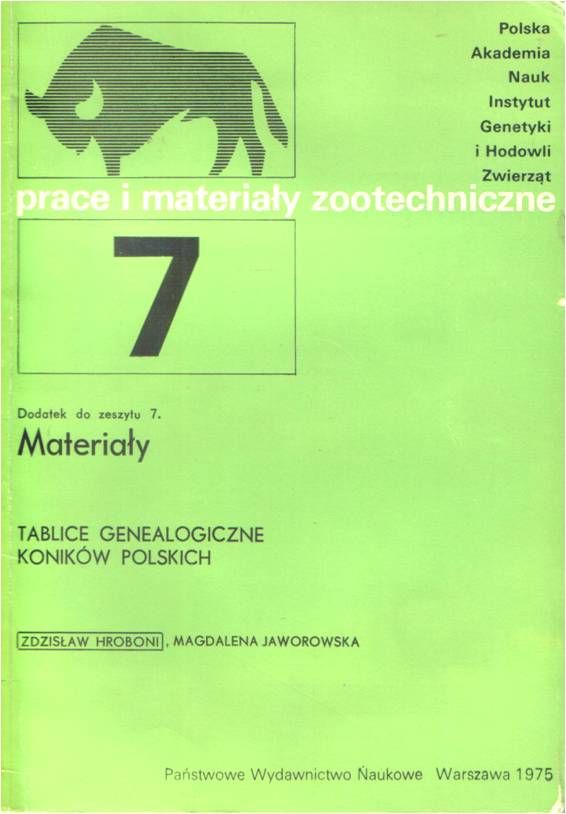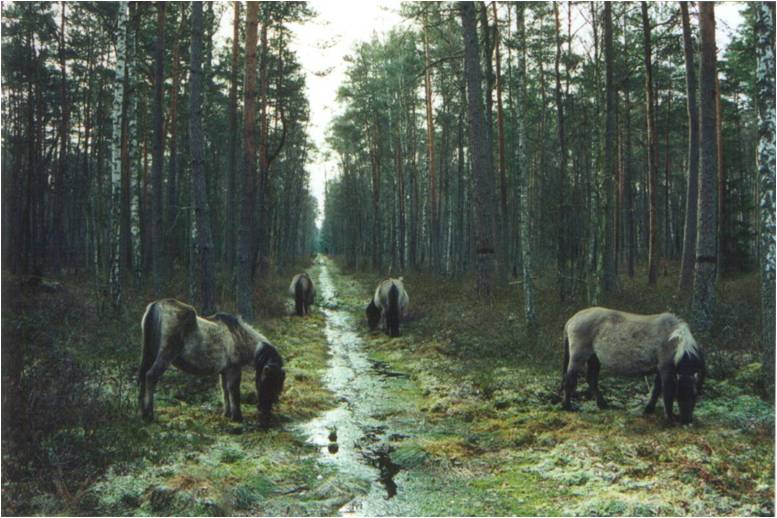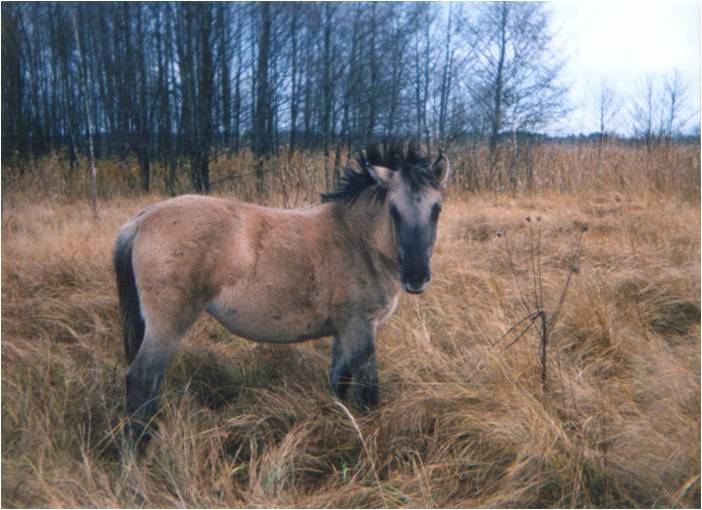- Born March 13, 1897 in Sanok. Son of Roman, a high-school professor, and Elżbieta, born Kunachowicz. Brothers and sisters of Tadeusz: Kazimierz Vetulani, a half-brother (professor at the Technical University in Lvov, killed by the Nazis on 4.07.1941); Zygmunt (diplomat, Consul General); Adam (historian of cannon law, professor at the Jagiellonian University of Cracow); Maria (civil servant); Elżbieta (died young).
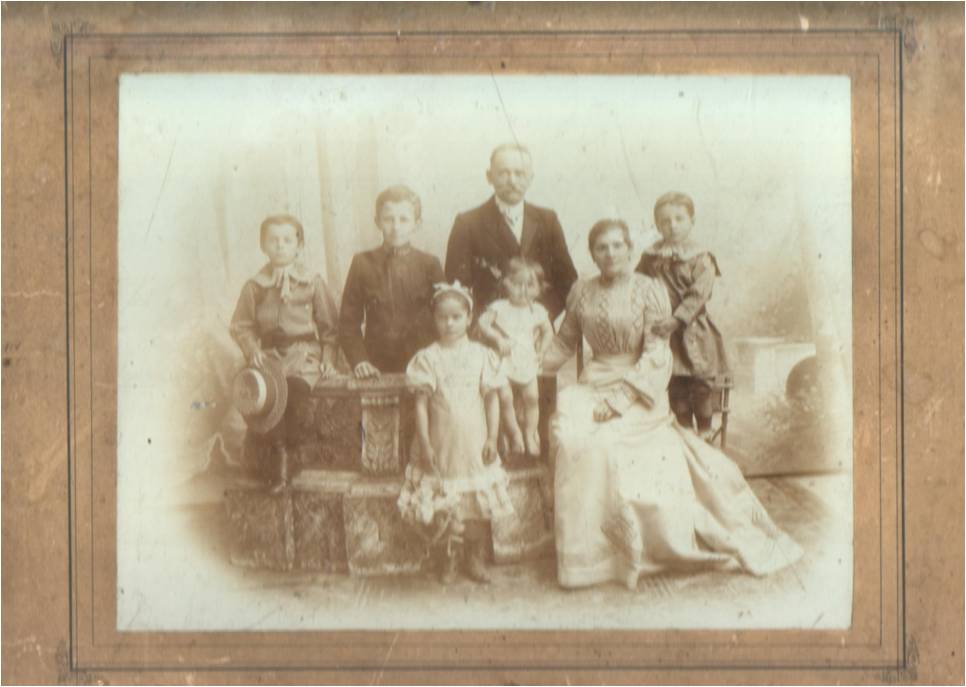
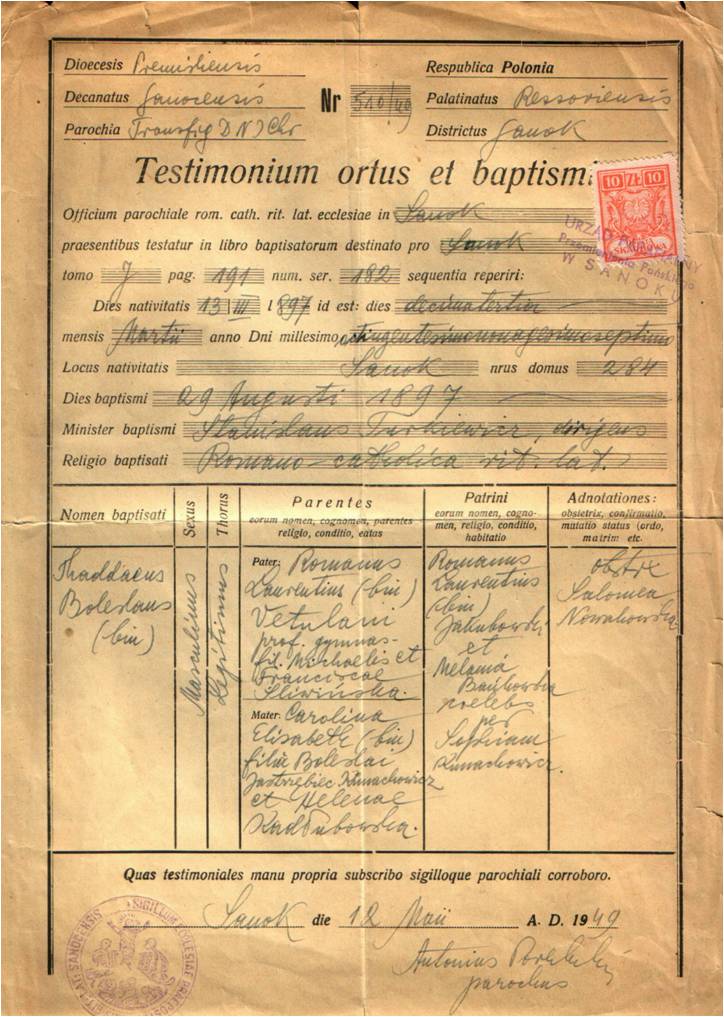
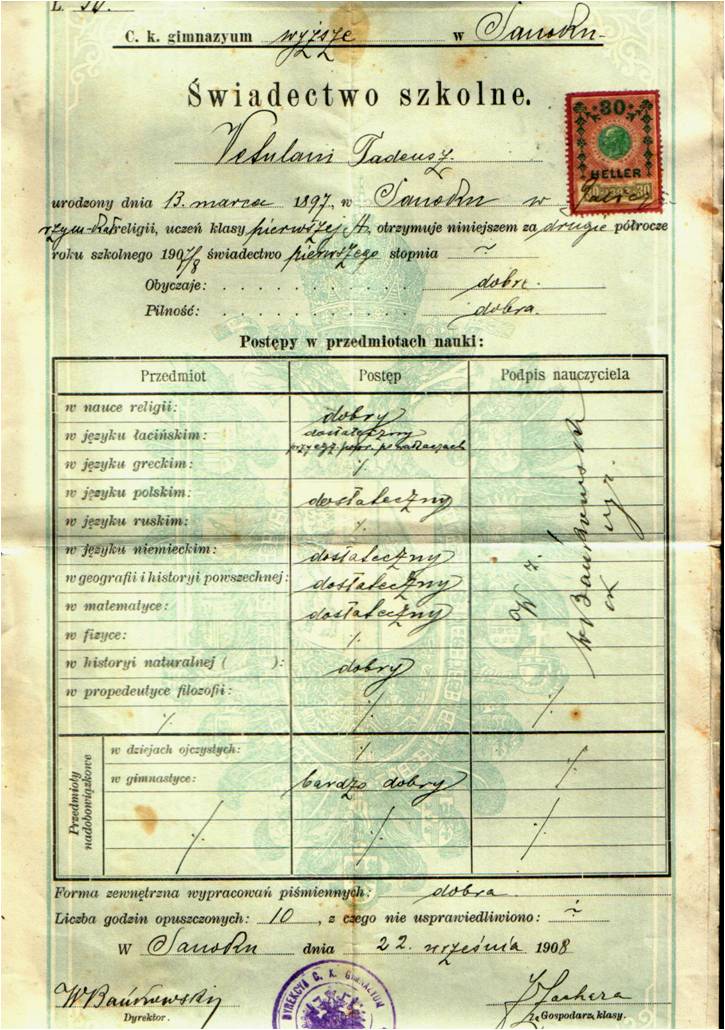
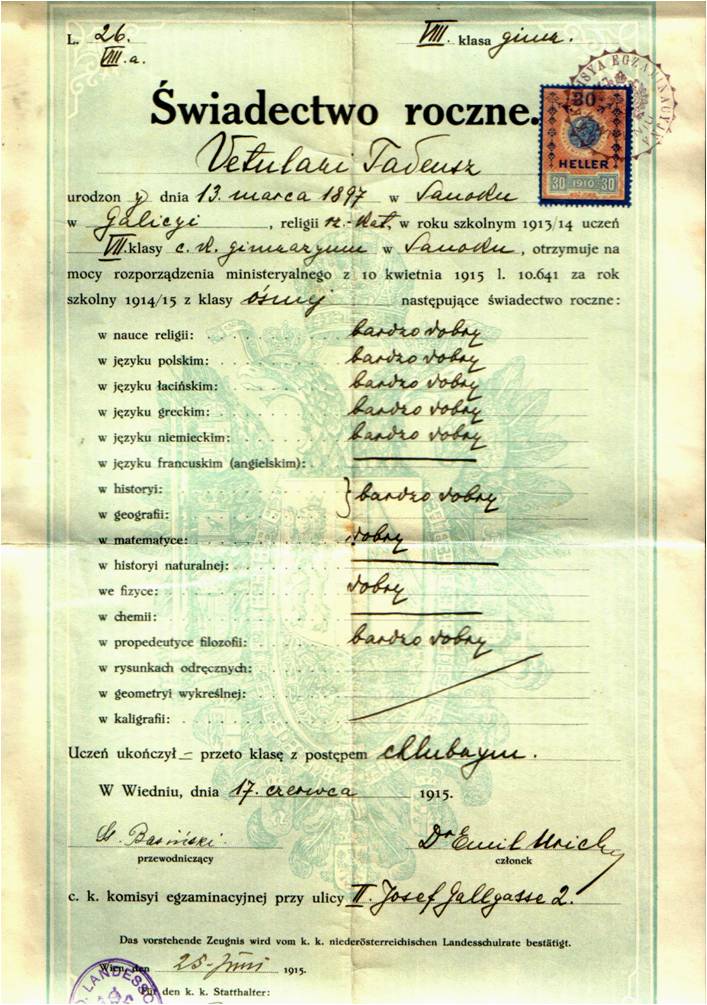
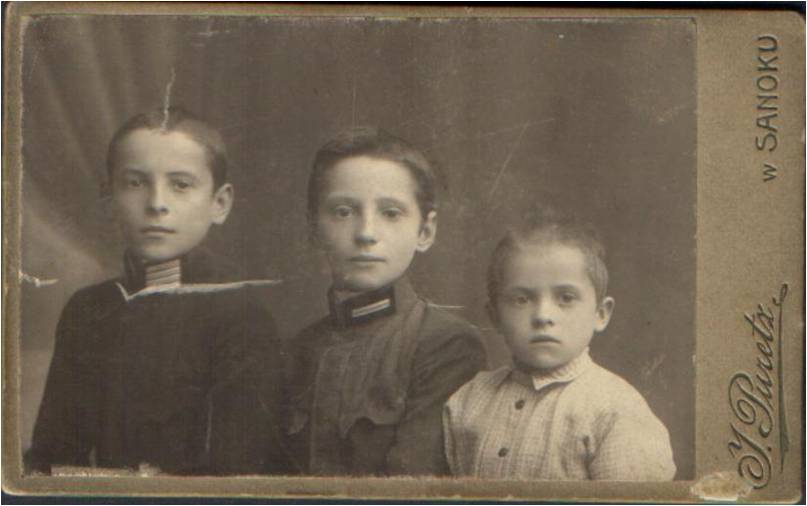
- 1915. Secondary-school certificate Vienna. 1915/1916 studies philosophy at the University of Vienna.
- 1919/1922 studies agriculture at the Faculty of Philosophy of the Jagiellonian University in Cracow. President of the student Circle of Agriculture at the Jagiellonian University.

- 1920. Serves in the Cracow Voluntary Guard Battalion.
- 1925. Senior assistant in the Department of Special Animal Breeding of the University of Poznań.
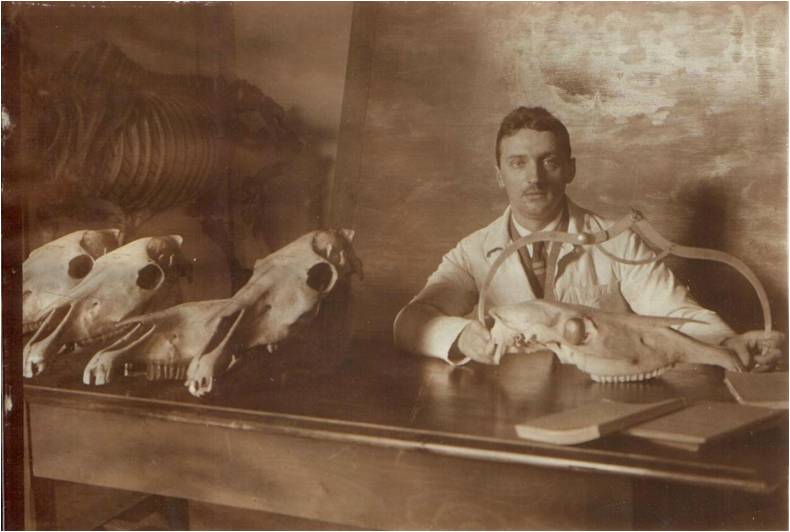
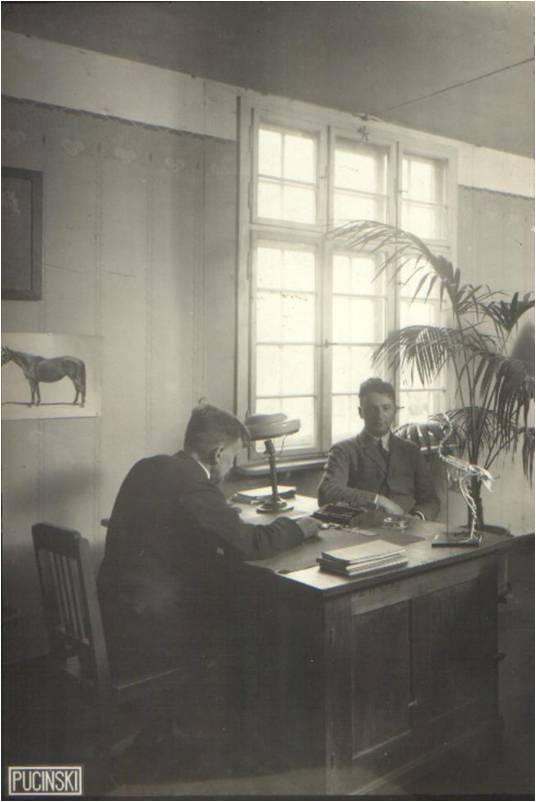
- 1922-1929. Tadeusz Vetulani publishes (in Polish and German) basic works about the "konik polski" (Polish primitive horse): "Badania nad konikiem polskim z okolic Biłgoraja" ("Studies on the Polish primitive horse in the Biłgoraj area") and "Dalsze badania nad konikiem polskim" ("Further studies on the Polish primitive horses"). "Konik polski" enters the hippological terminology.
- The term (Equus caballus gmelini Antonius, forma silvatica Vet.) is accepted by the leading specialists (Adametz, Antonius, Gromova, Sokolov, Heptner and others) and is permanently adopted in animal systematics.
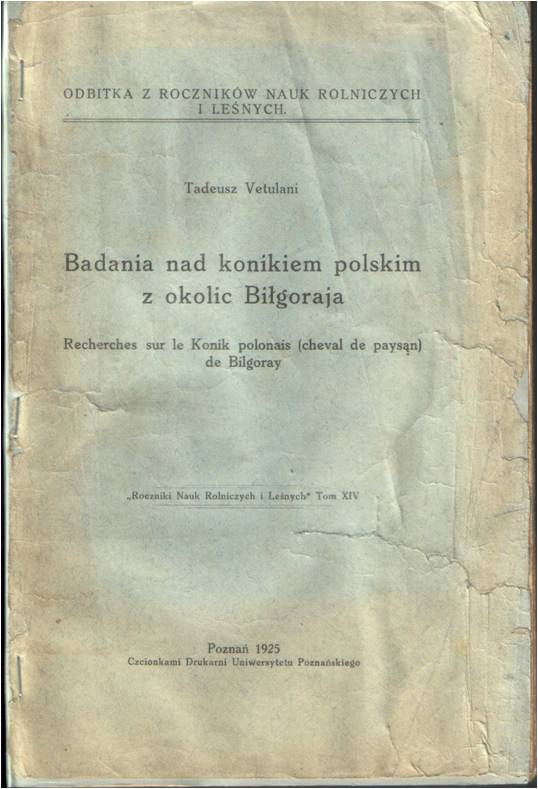
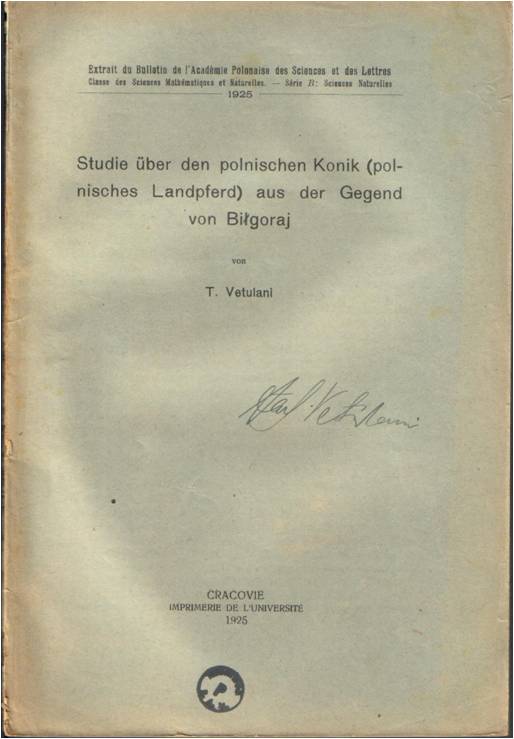
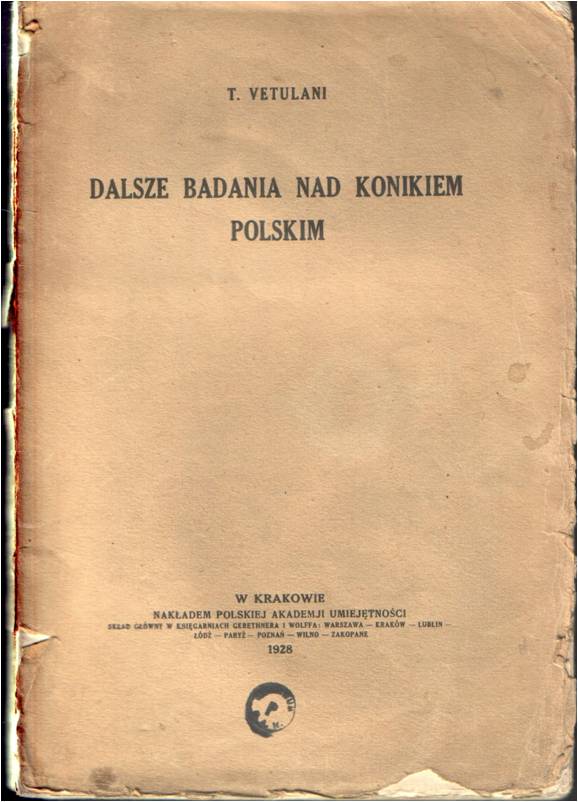

- 1926. PhD in agriculture sciences from the Jagiellonian University Cracow.
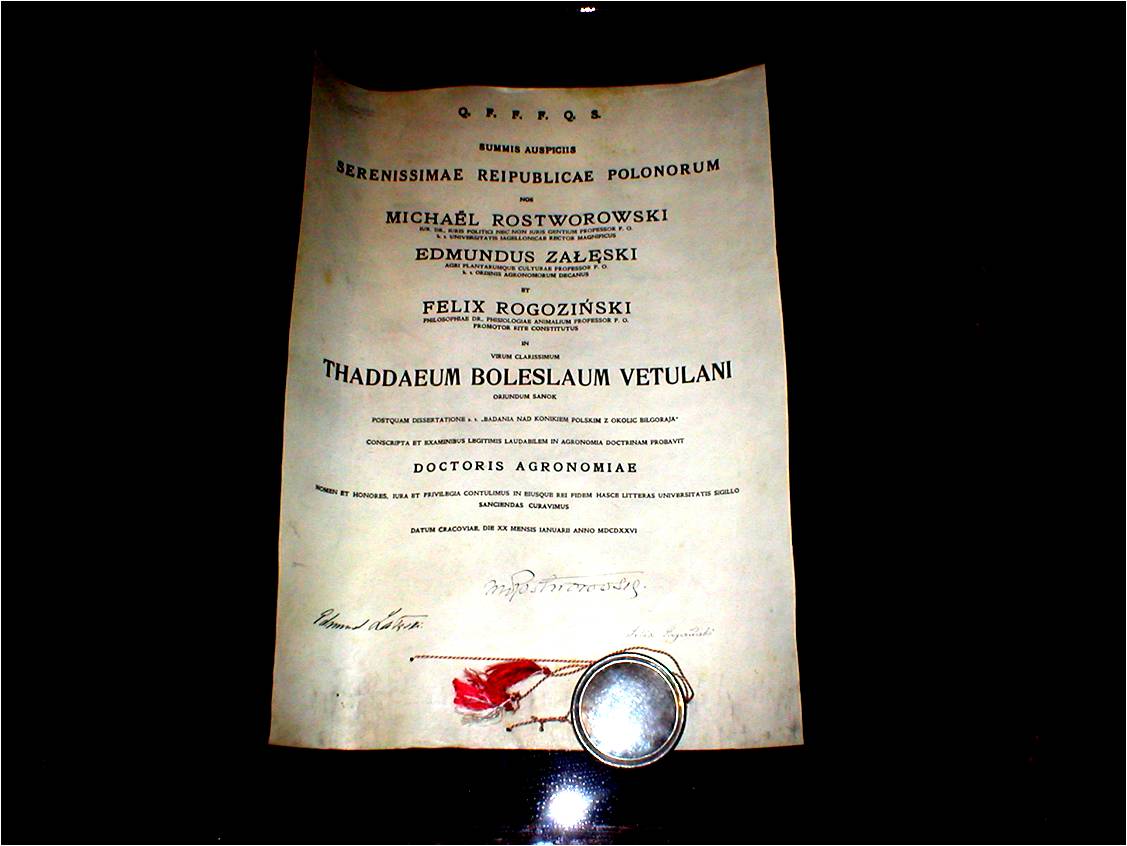
- 1929. Habilitation at the University of Poznań in general and special animal breeding. Obtains the grade of reader (docent) at this university.

- During twenties and thirties Tadeusz Vetulani focuses his research and breeding activities on the idea of reconstructing the forest tarpan by applying methods of natural reserve breeding in the wild (through selection of specimens with atavistic features and elimination of specimens with recently acuired ones). During this period he also contributes numerous works concerning local domestic animal species (mainly cattle and sheep species) and agricultural policies in Poland.
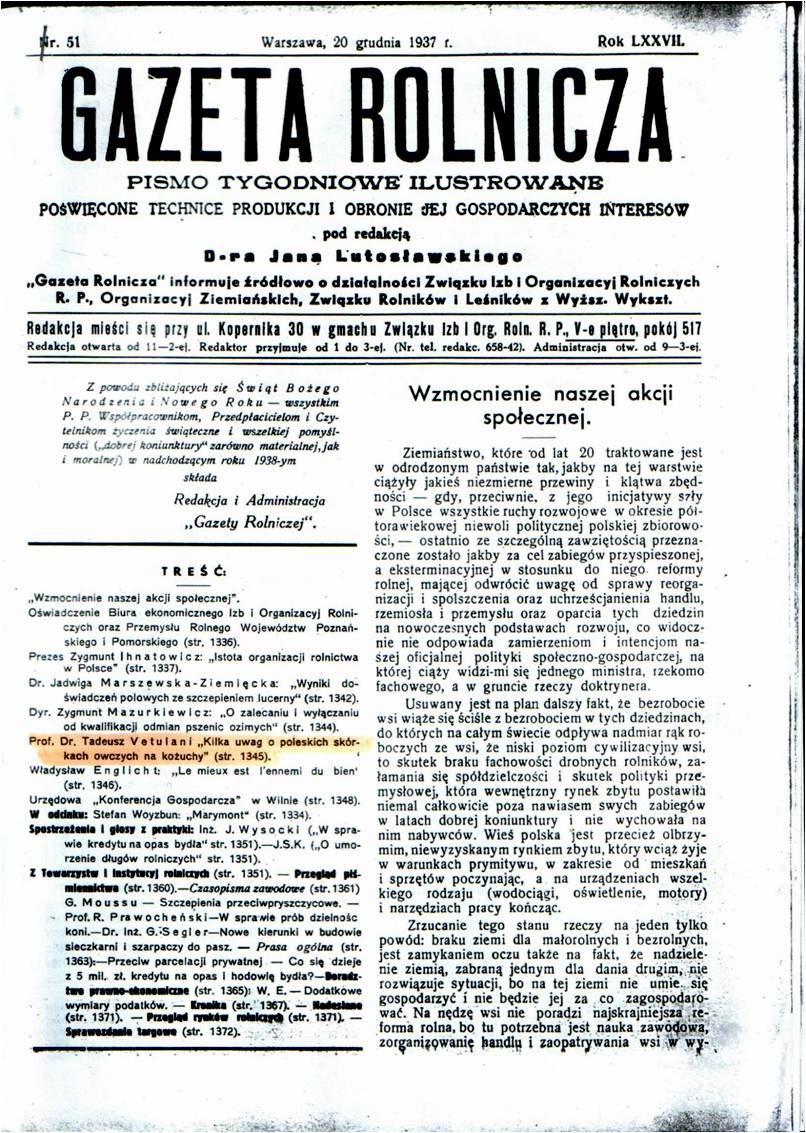
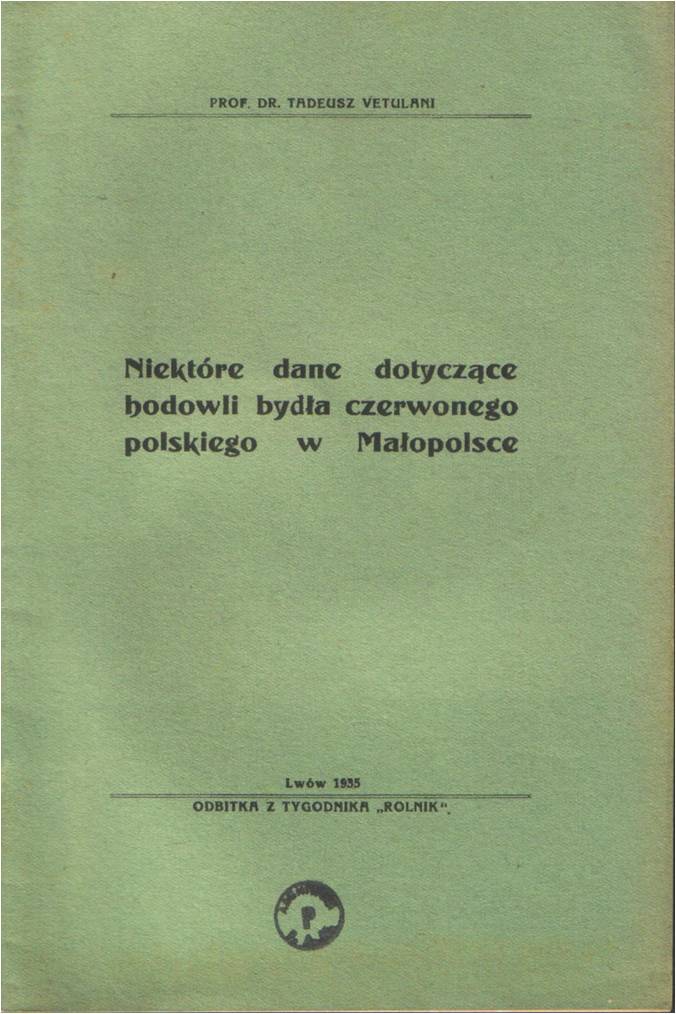
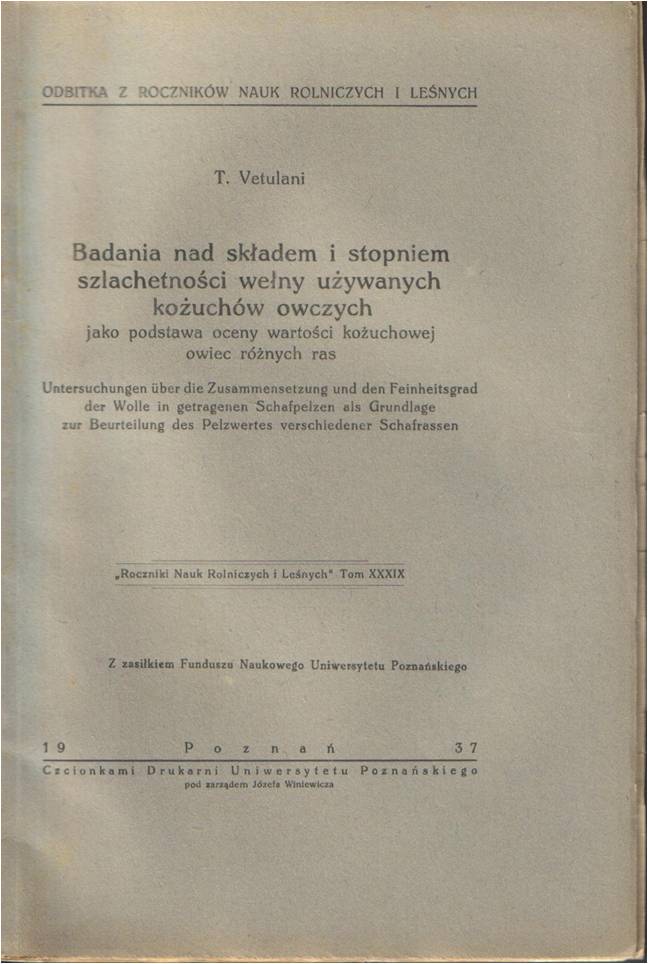
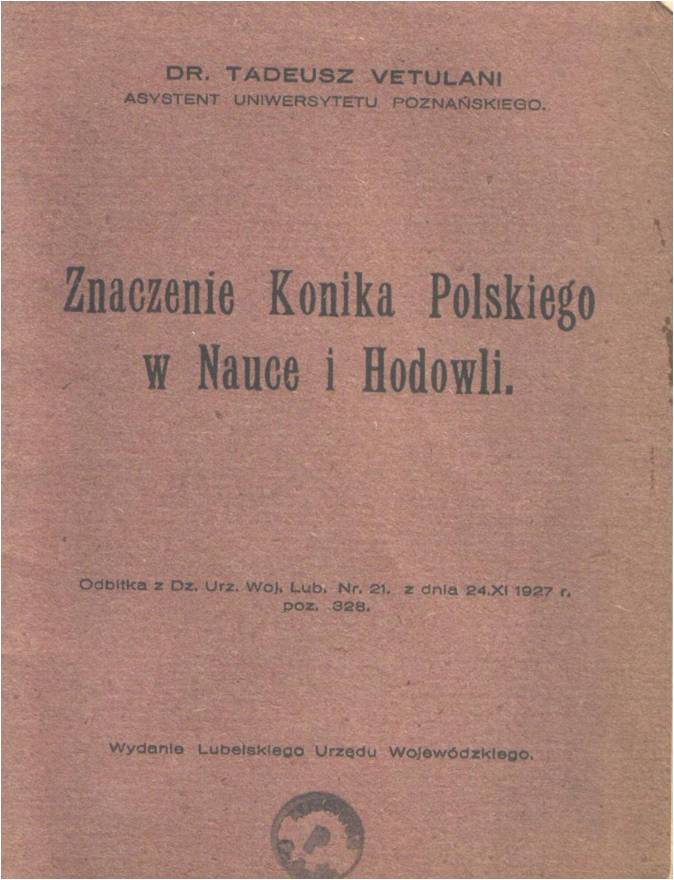
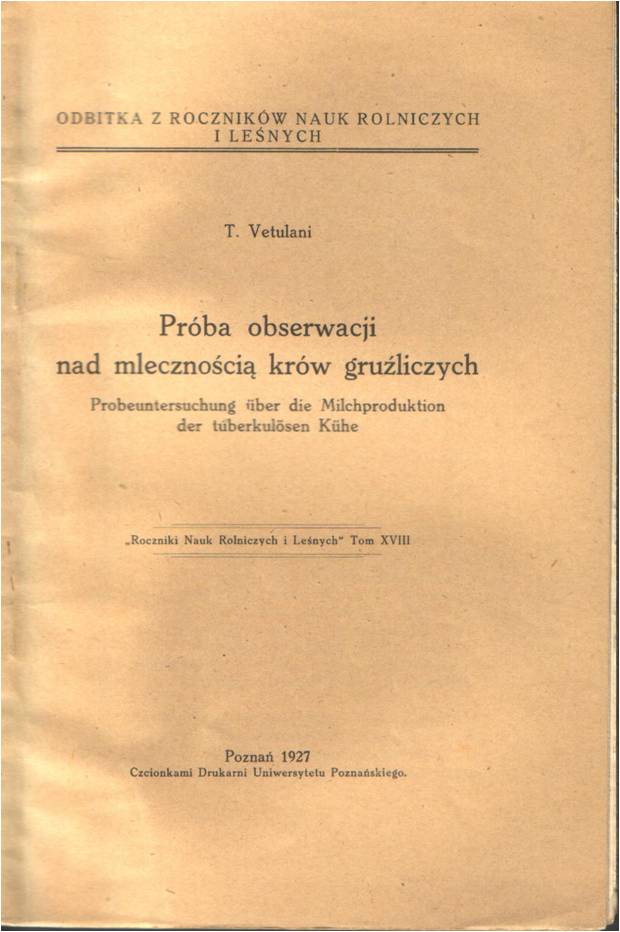
- 1931-1935. Professor-substitute (zastępca profesora) and head of the Division of Animal Breeding at the University of Stefan Batory in Wilno (Vilnius).
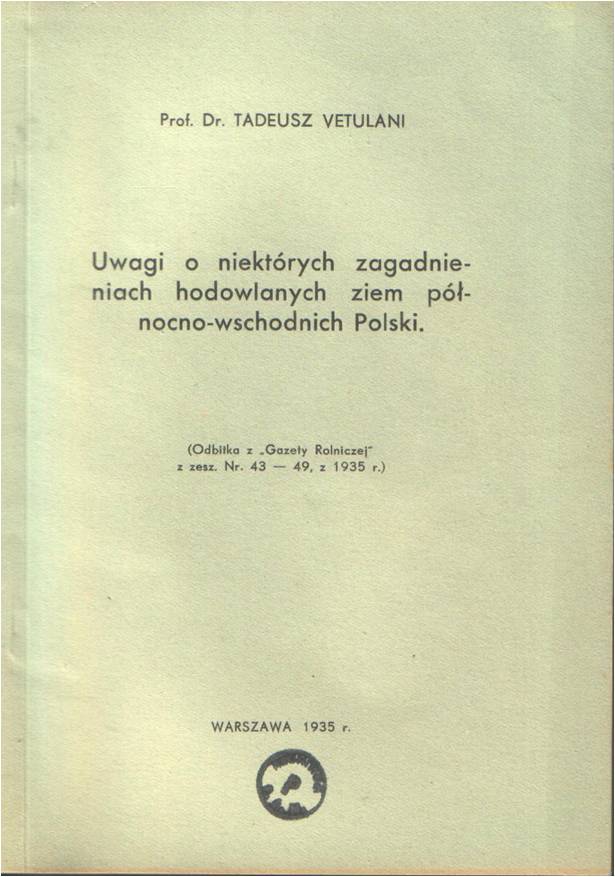
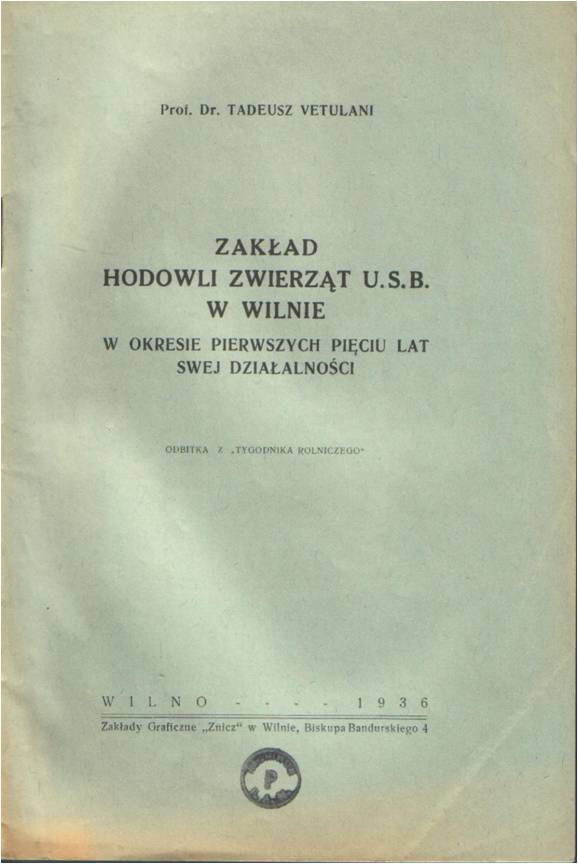
- 1929 and 1934. Two research expeditions to Turkey helps the reconstruction of Turkish horse breeding.
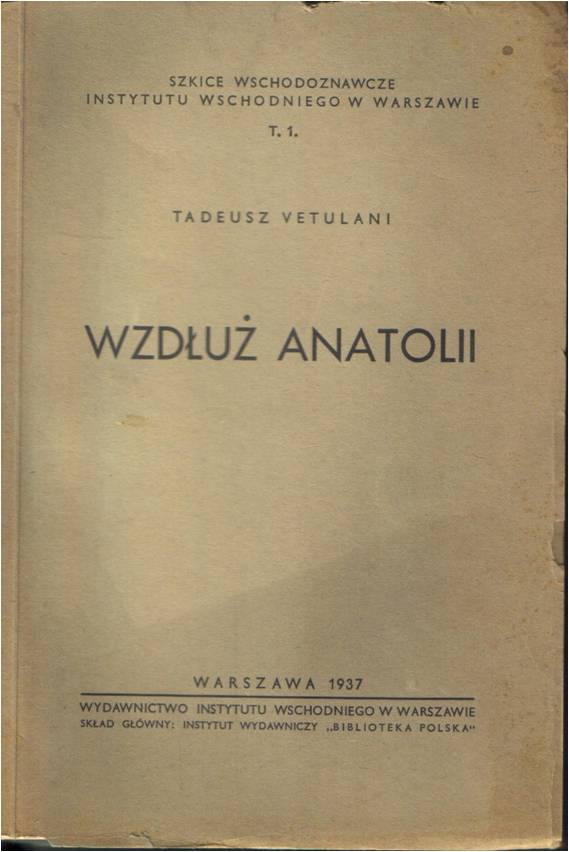
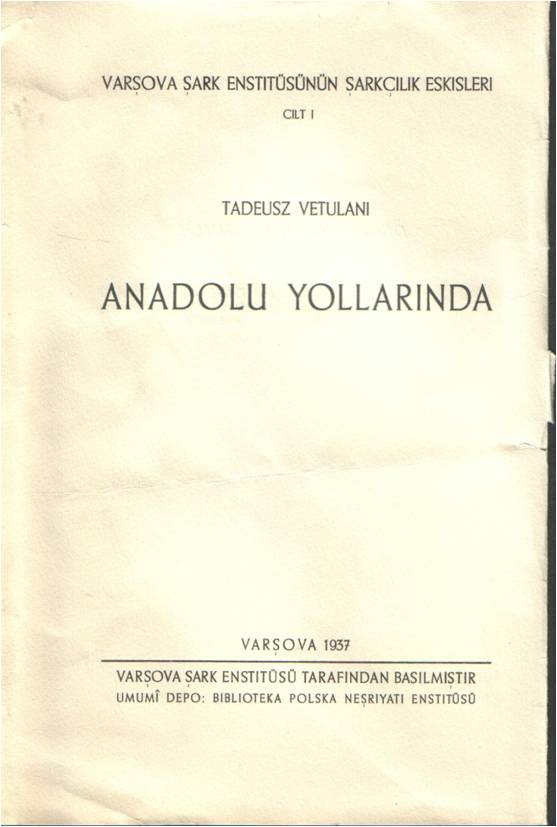
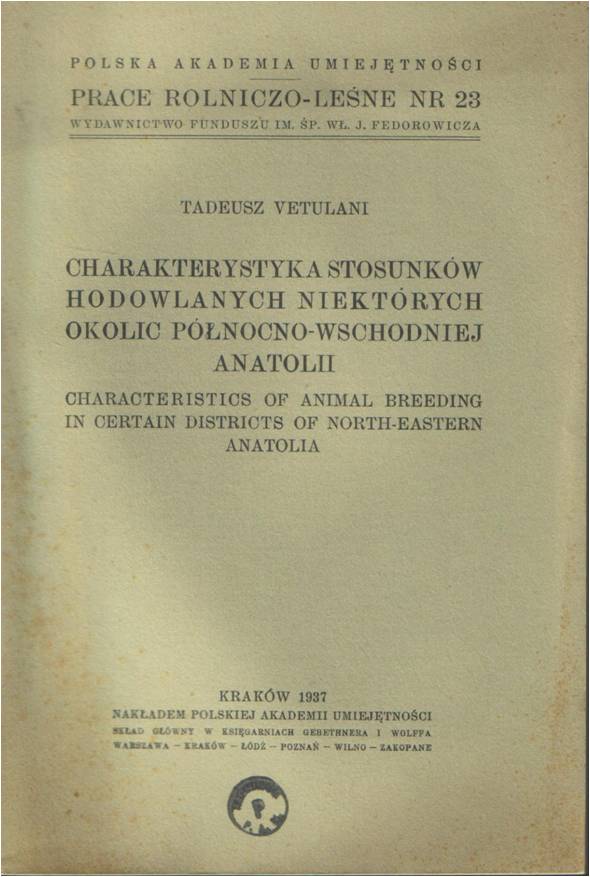
- 1935. Associate professor at the University of Poznań. Head of the Department of Special Animal Breeding at this university.
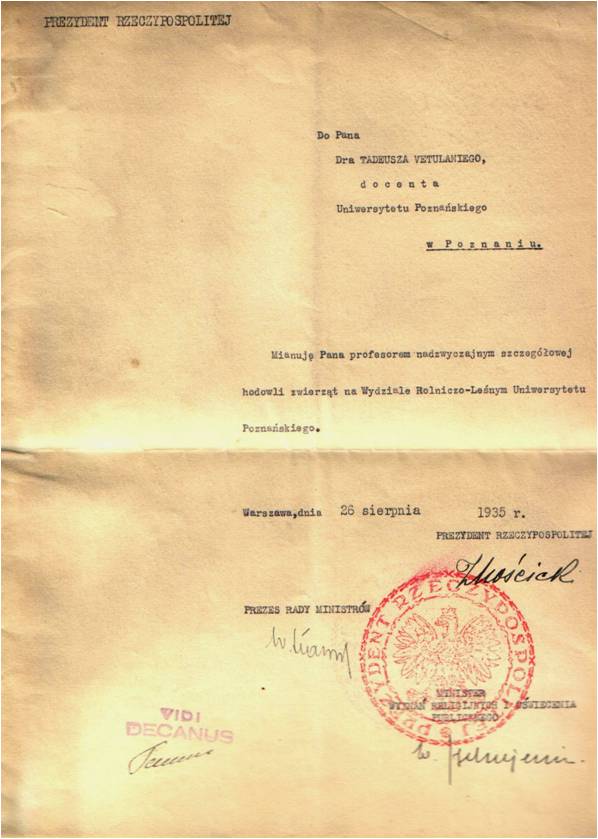
- February 9, 1936. Foundation on Vetulani's initiative of the Konik reserve in Białowieża Forest (Zwierzyniec Koników Polskich typu Tarpana Leśnego). This permits to begin practical work on the reconstruction of the forest tarpan in its natural environment (initial herd: 5 mares and one young stallion).
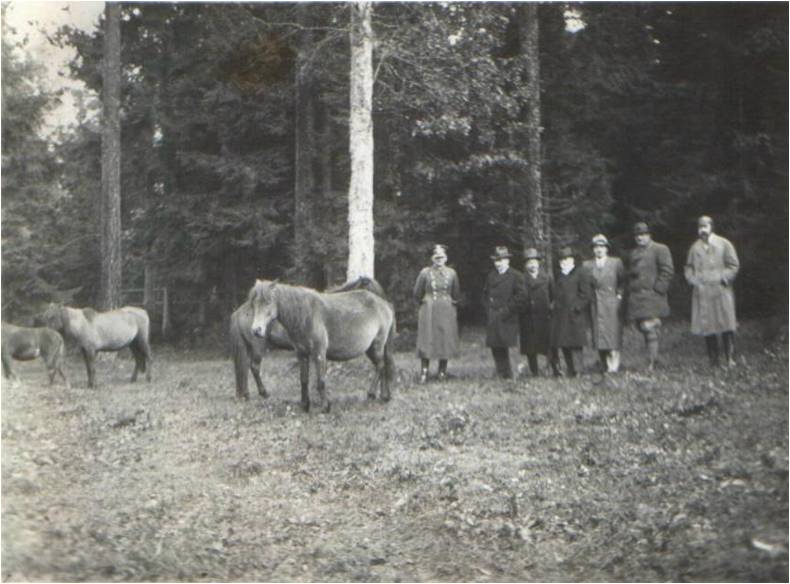
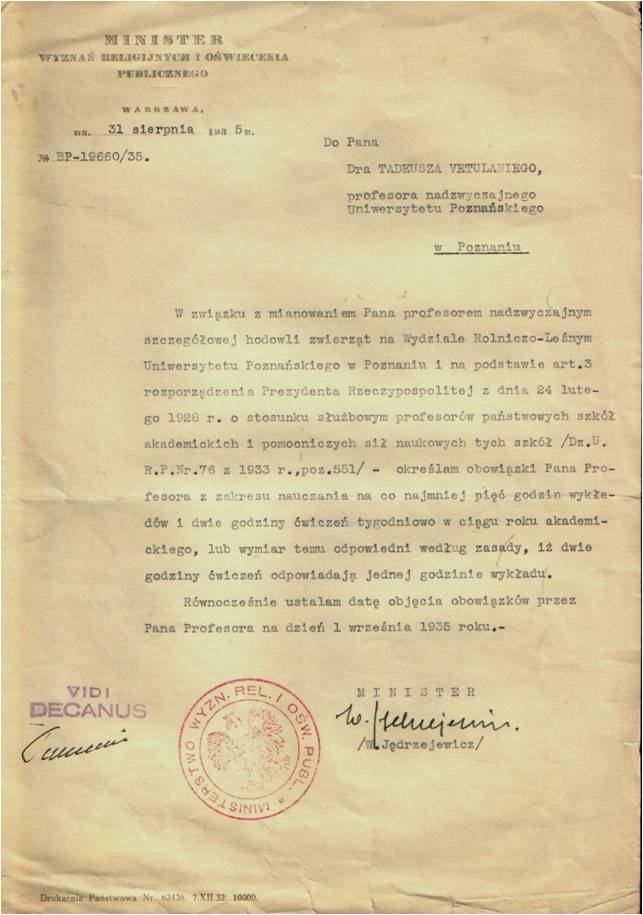
- August 1938. Co-editor of the international journal for animal breeding "Zeitschrift für Züchtungsbiologie" (Berlin).

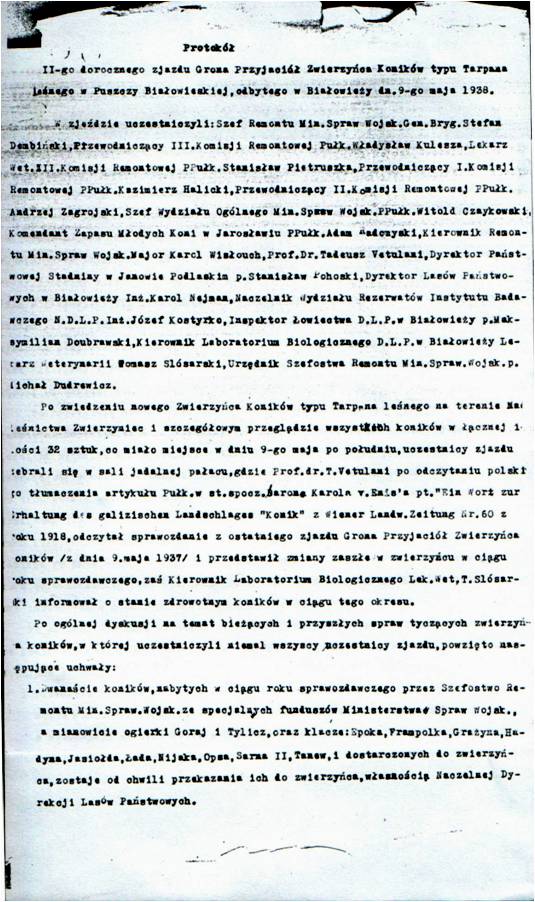
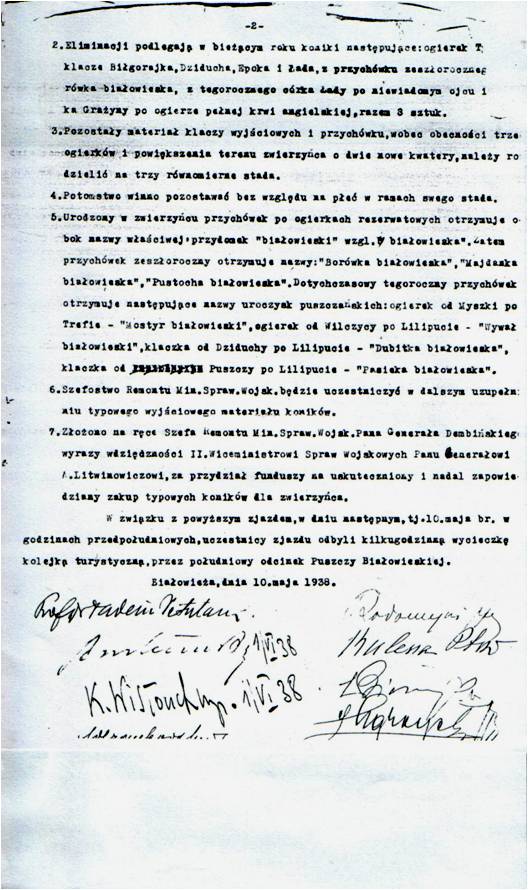
- 1939. Professor Vetulani represents Poland at the Animal Breeding Congress in Zürich.
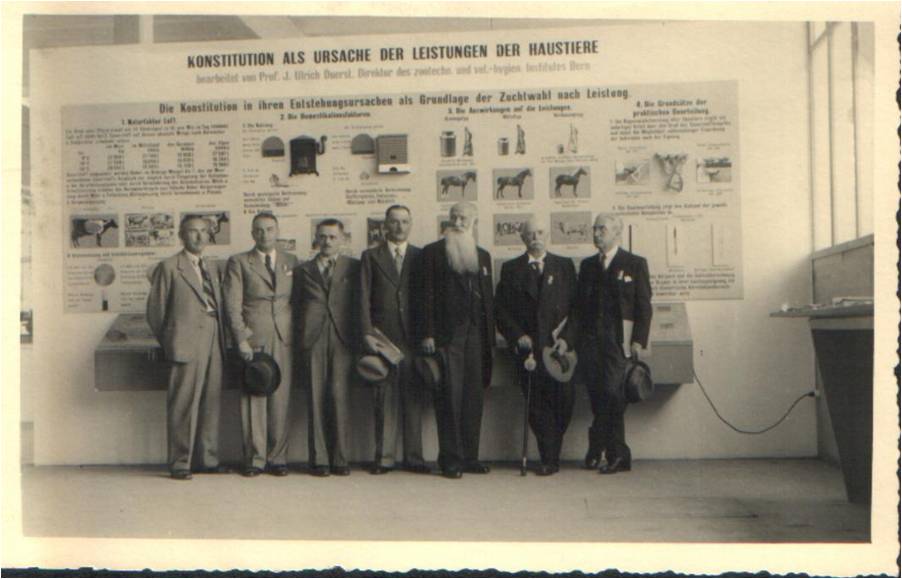
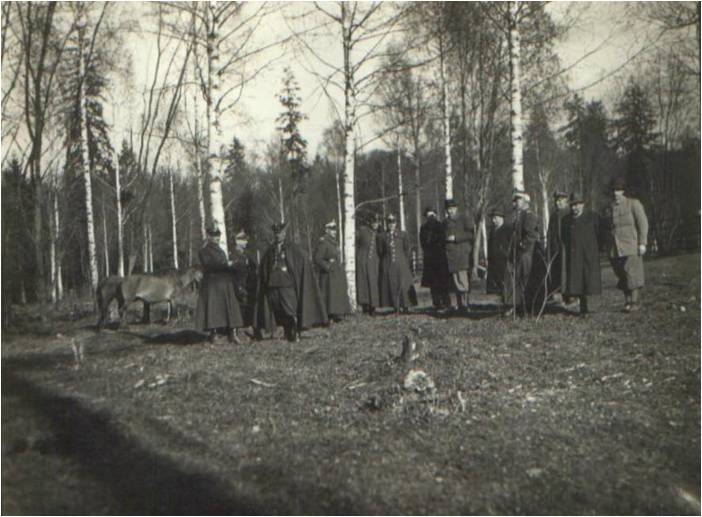
- September 1, 1939. War. Białowieża Forest Reserve "Zwierzyniec" hosts 13 mares, 19 foals and young horses, and 3 stallions.
- February 2, 1940. Under the supervision of a high Nazi officer, Prof. Dr. Lutz Heck, the head of the Office of Nature Protection of the Third Reich, 28 reserve horses were robbed from Białowieża with destination to Germany, never to be returned. The Nazis stole from Białowieża at least 33 of the best koniks during the war.
- 1939-1945. In Cracow with no access to konik horses, most of them having been transported to Germany.
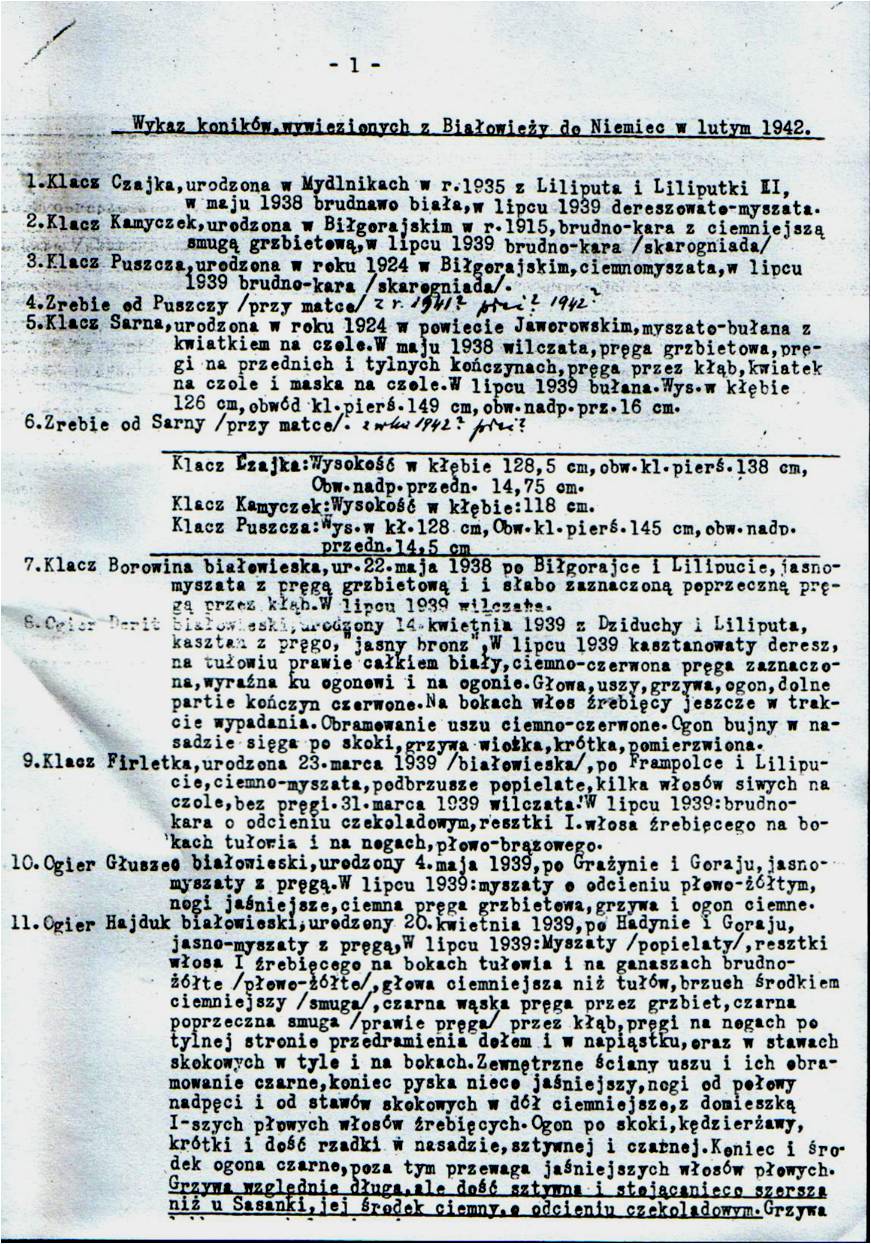
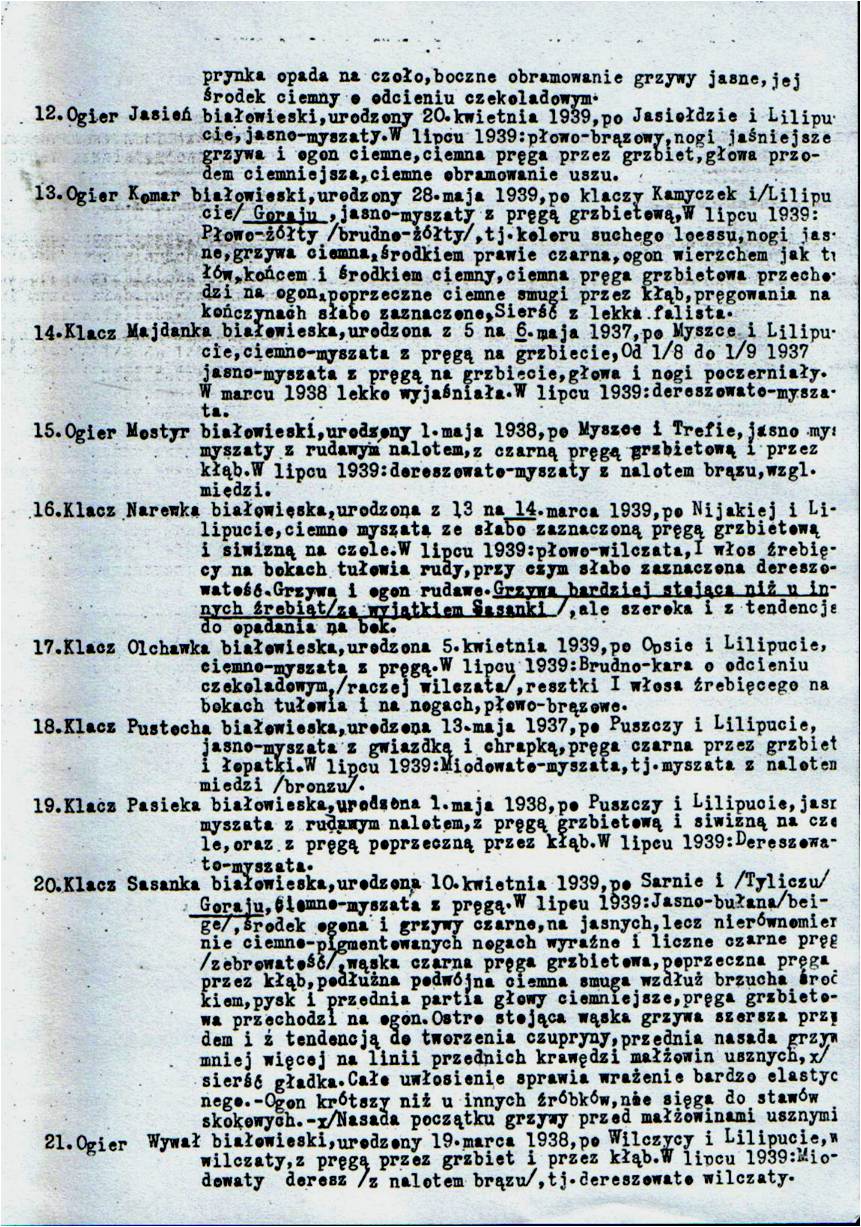

- 1940-1943. Works at the Polish Red Cross in Cracow as the official spokesman of this organisation vis-à-vis the occupation war administration. Cares for the needs of a military camp for Polish war prisoners, both on behalf of the PCK and on a private basis.
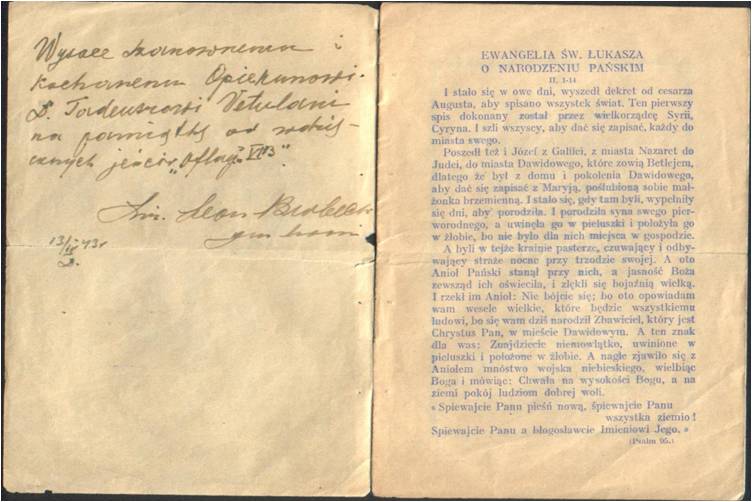
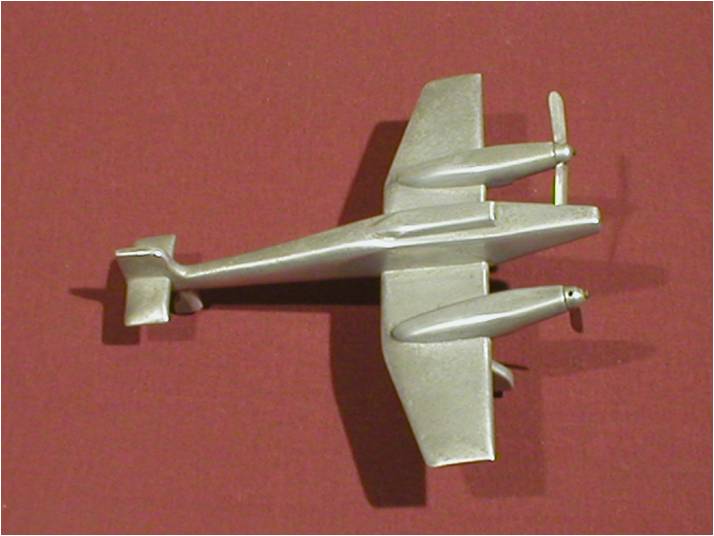
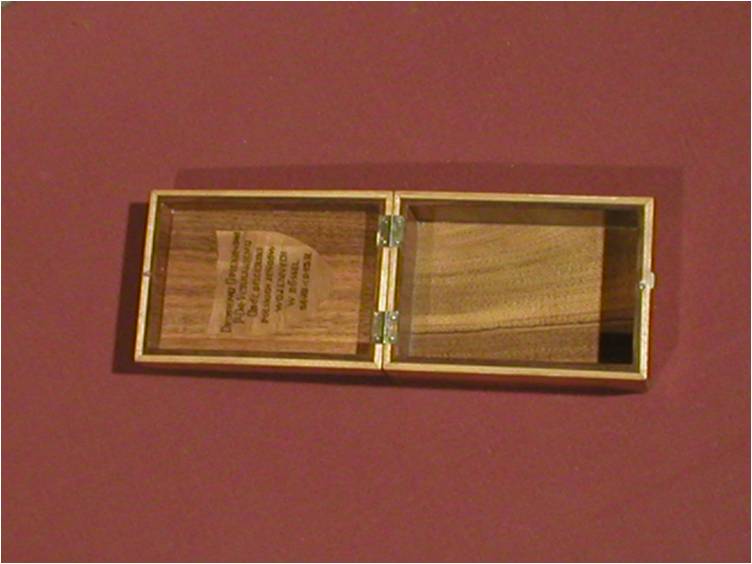
-
Because of his renown among German zoologists and his Italian family ties the occupation forces proposed to Prof. Vetulani to collaborate with them. These proposals were rejected. He also refused to serve as an independent observer of the Katyń massacre (of Polish officers murdered by the Soviets), as he did not wish to contribute to Nazi propaganda objectives.
(Prof. Vetulani received gifts from Polish soldiers - war prisoners in Germany - as marks of gratitude for material help and moral assistance.)

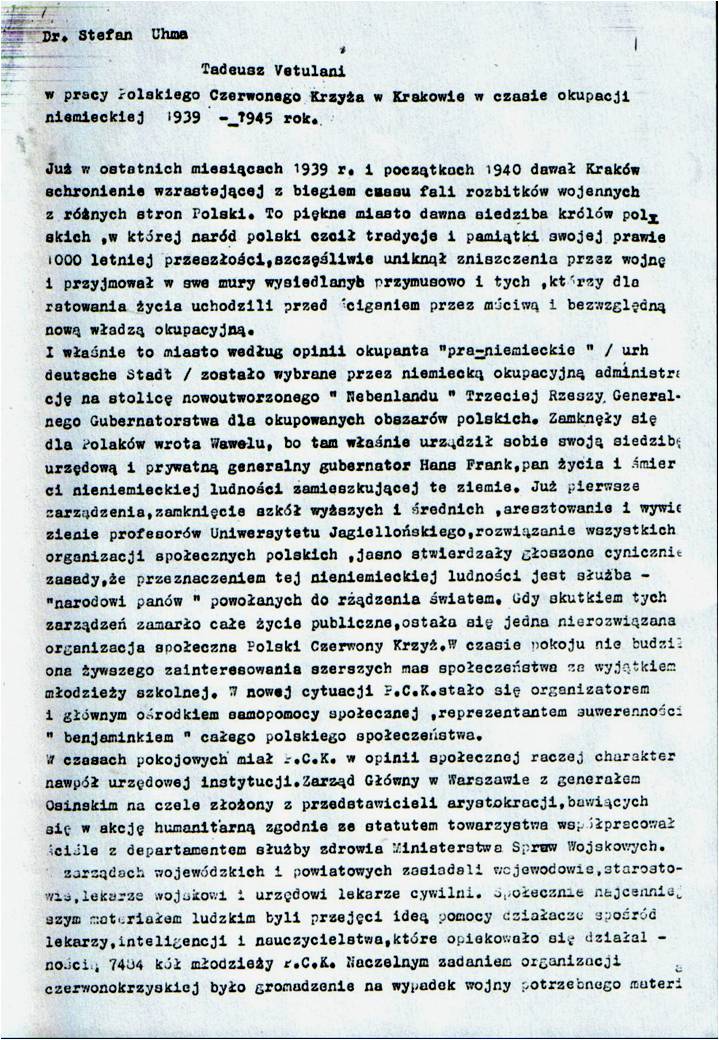
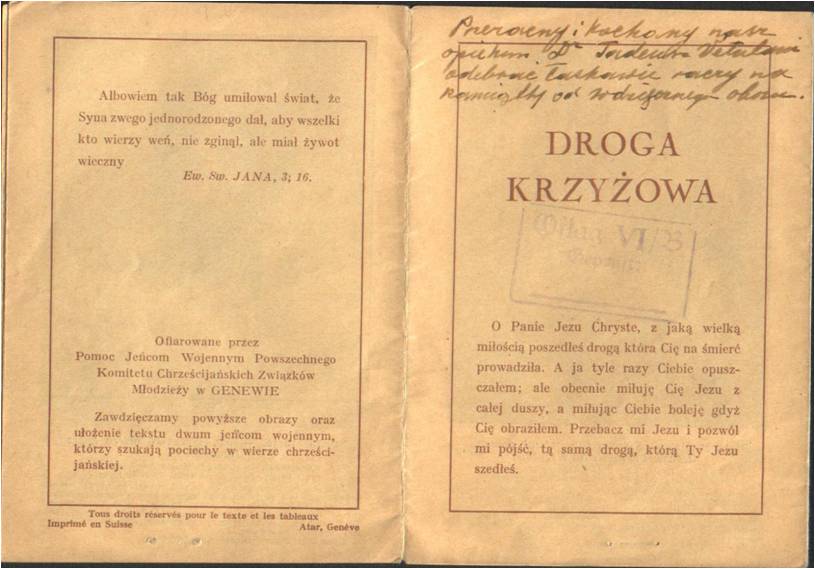
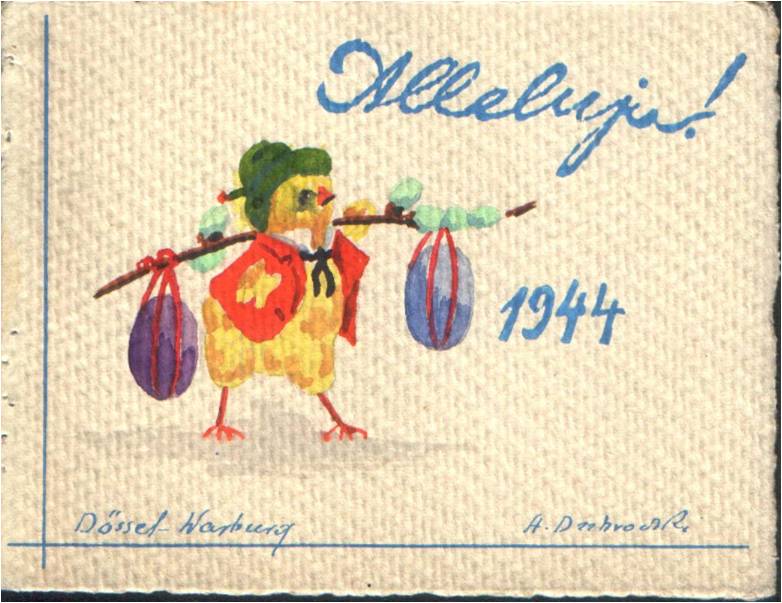
- 1945. On behalf of the Polish Ministry of Forests Prof Vetulani participated in the post-war recovery mission in Germany. The mission did not succeed in achieving the desired results. Only a couple of Koniks from Puławy and transported to Germany returned to Poland.
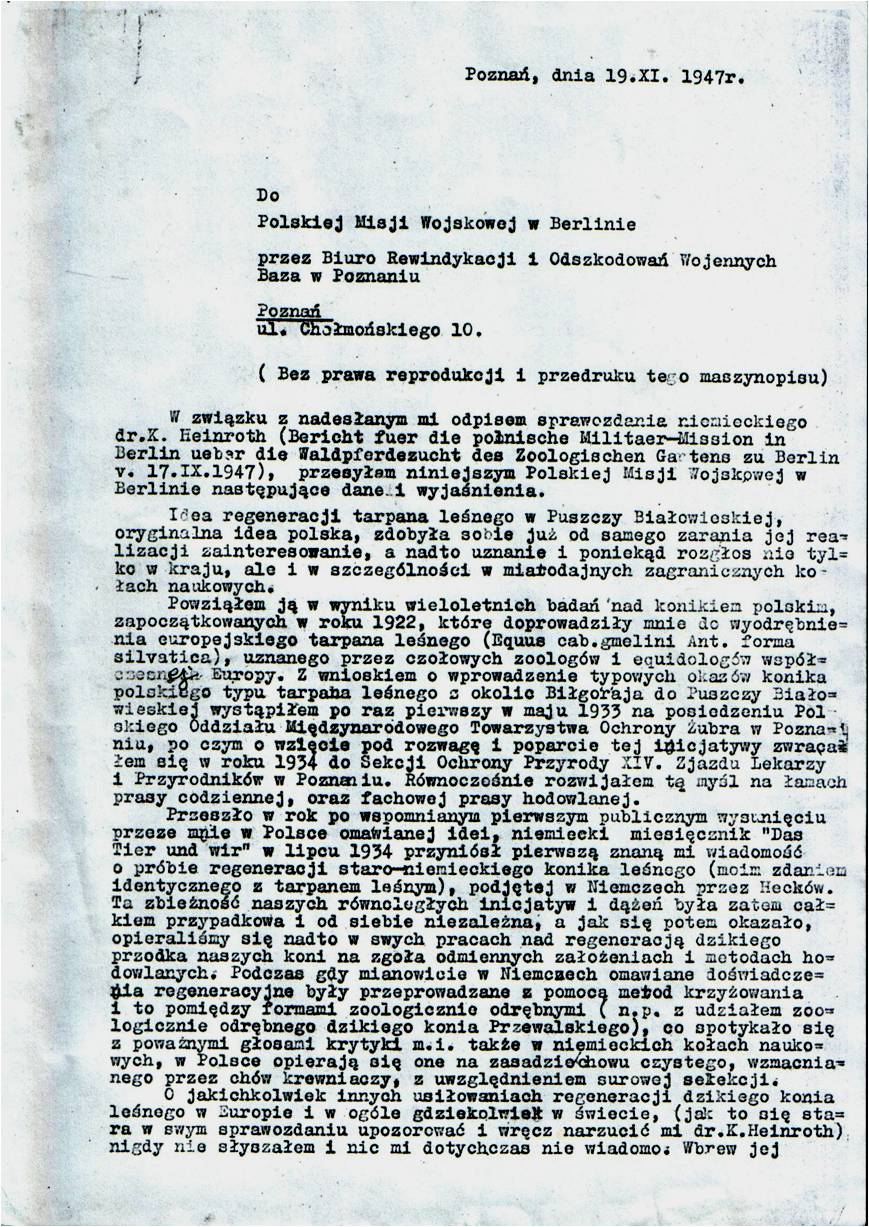

- On June 22, 1945 he resumed his duties as the head of the Department of Special Animal Breeding at the University of Poznań.
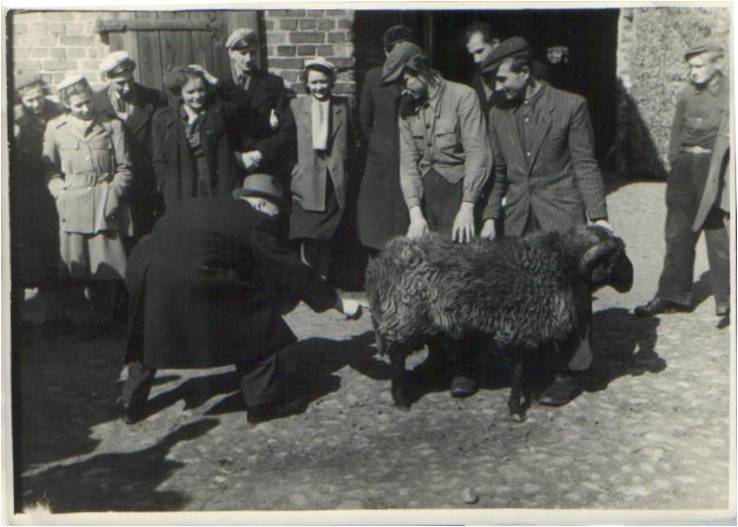
- 1945-1952. Intensive efforts to reconstruct the research environment and to compensate losses in the population of koniks. 40 koniks in Białowieża reserve.
- 1949. Full professor in special animal breeding.
- June 5, 1949. Marriage with Maria Godlewska.
- 1950. Birth of the son Zygmunt.
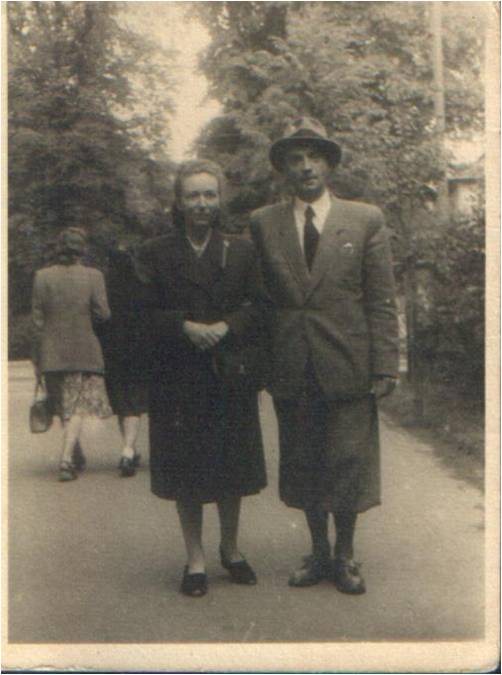
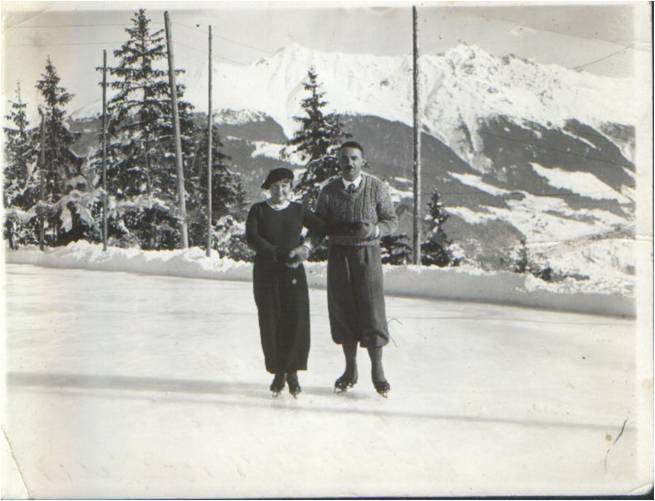

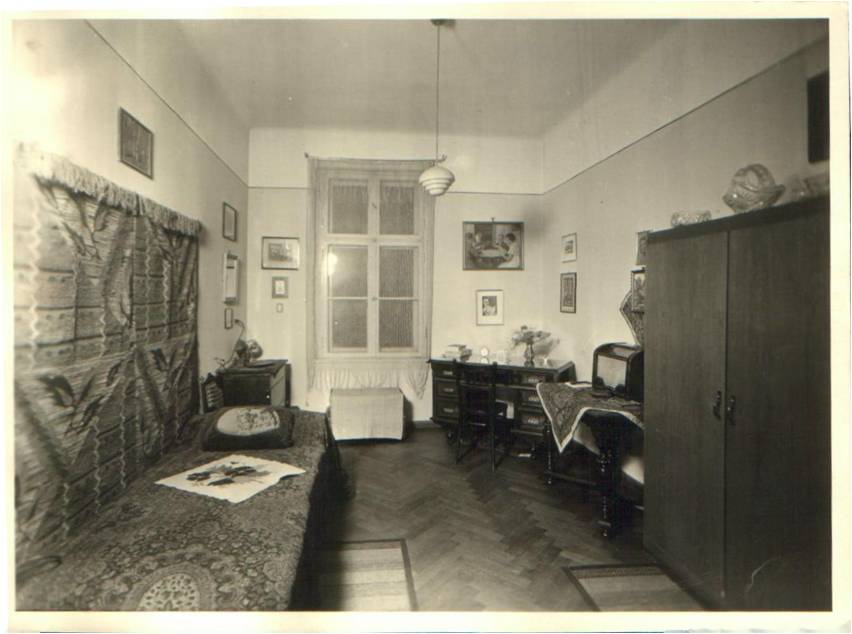
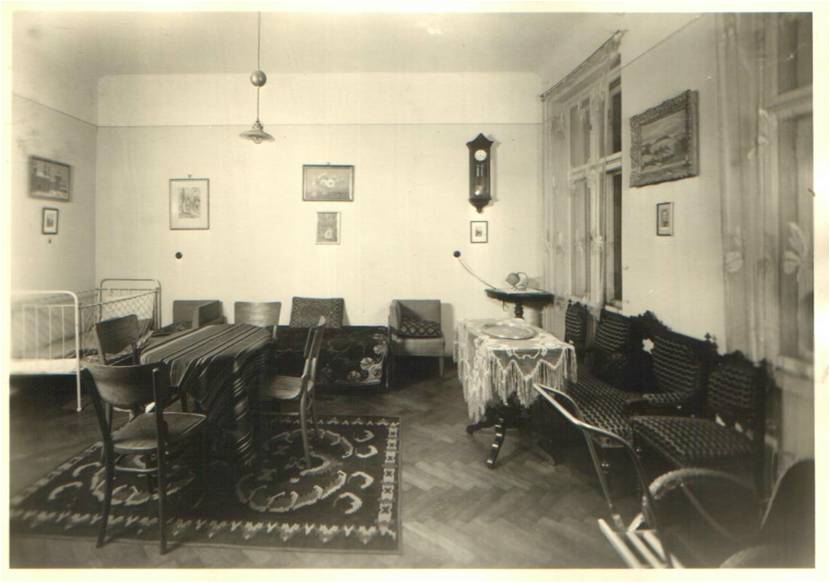
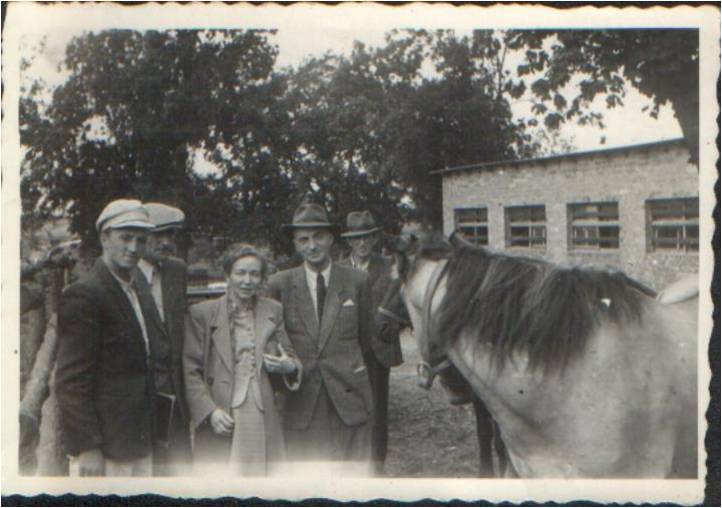
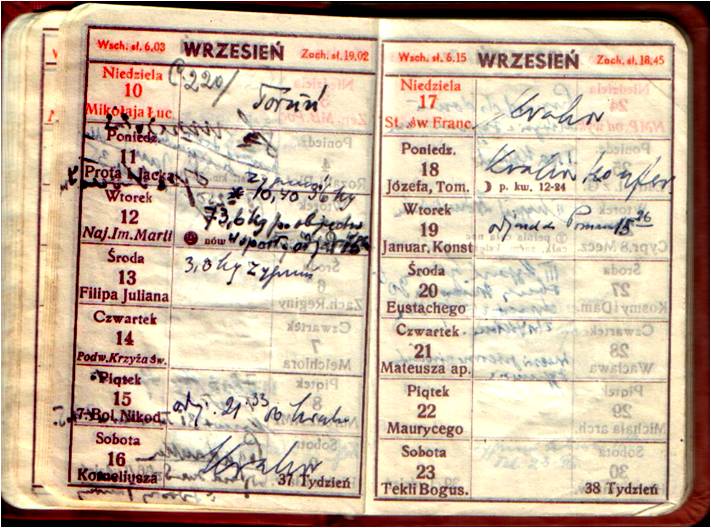
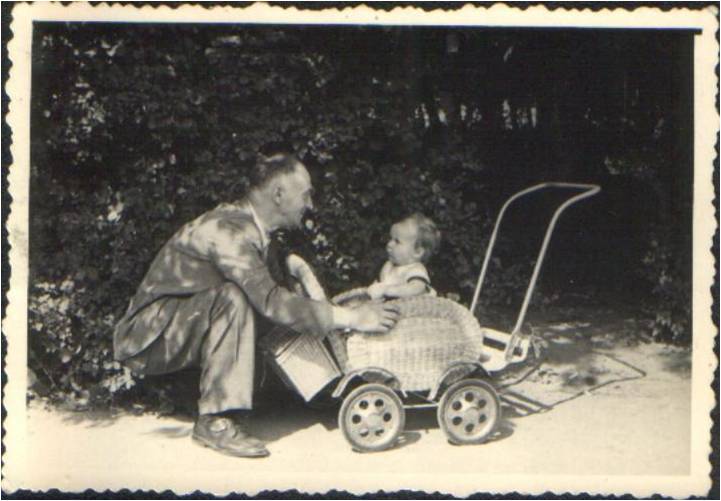
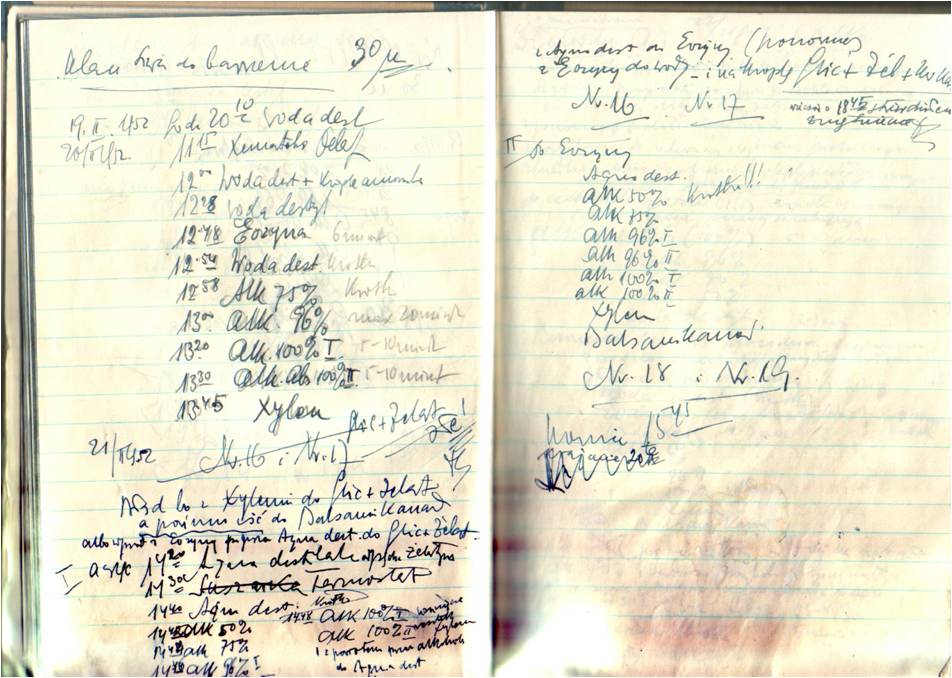
- February 24, 1952 Collapsed at work in the Prof. Grodziński laboratory in Cracow during a study trip. Died the same day from heart attack.
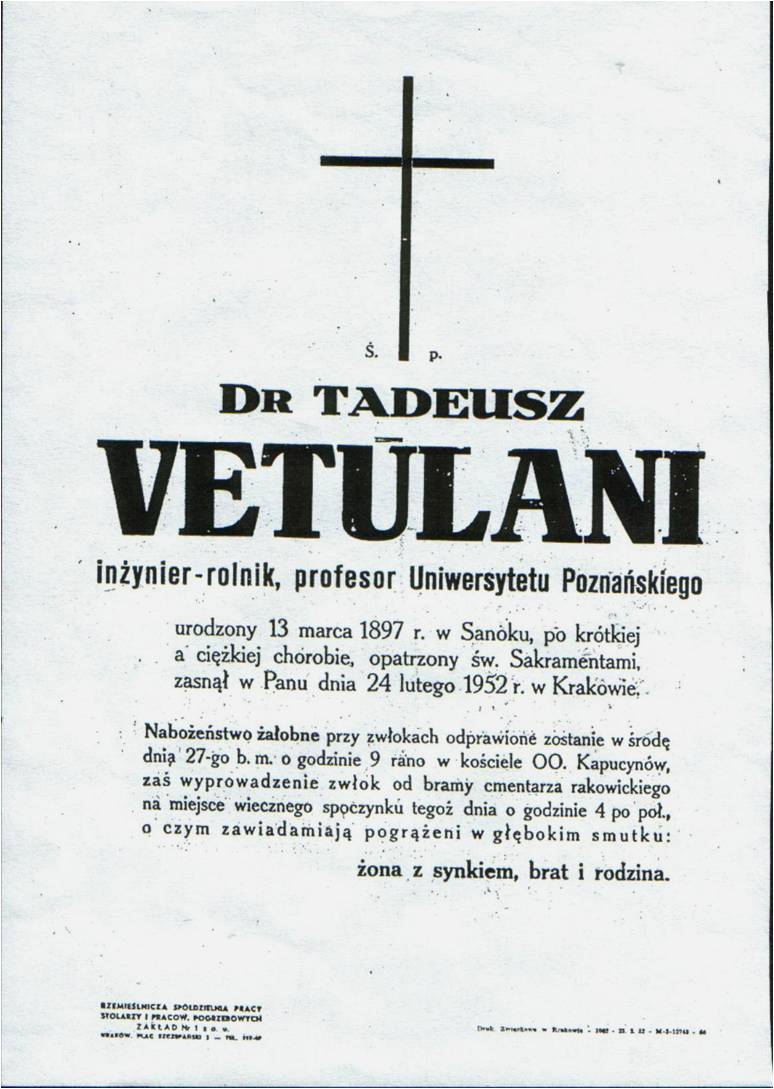
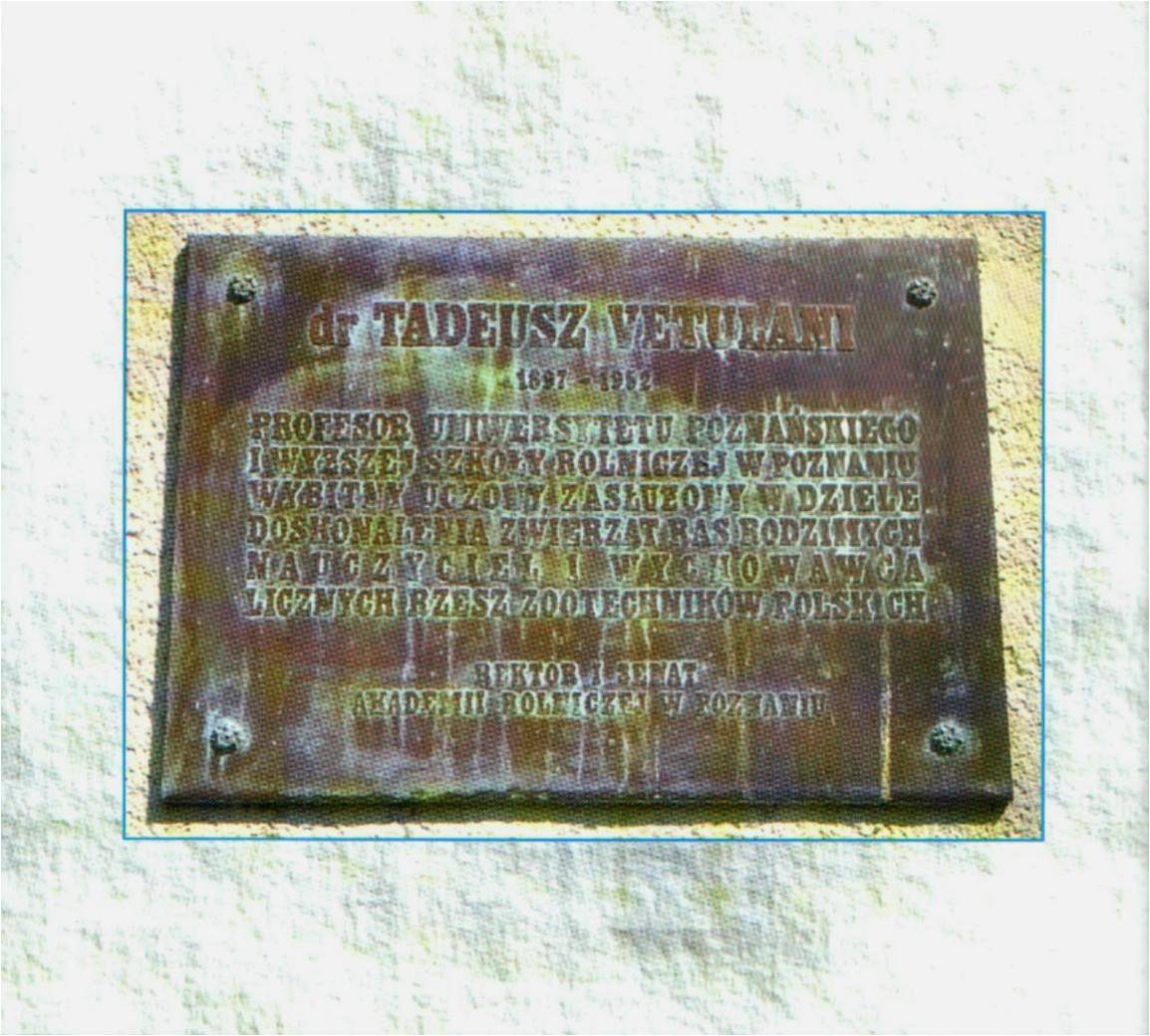
Professor Vetulani published 104 research papers on breeding and related subjects. When he died in 1952, there were 40 koniks in the Białowieża reserve. Only Three years later 11 staillons and 54 mares from the reserve and from regular breeding are reported to exist in the first official register of koniks.
In the opinion of the specialists Vetulani saved from extinction a prehistoric horse species of a type "which nobody else succeeded in preserving through breeding, either in Poland or in any other European country".
(Pruski, 1979).
